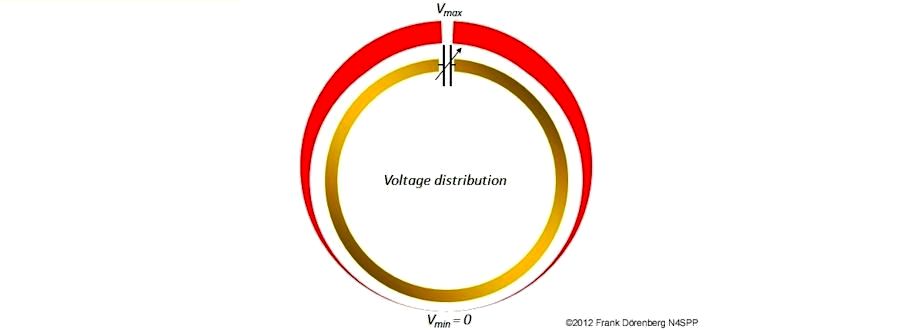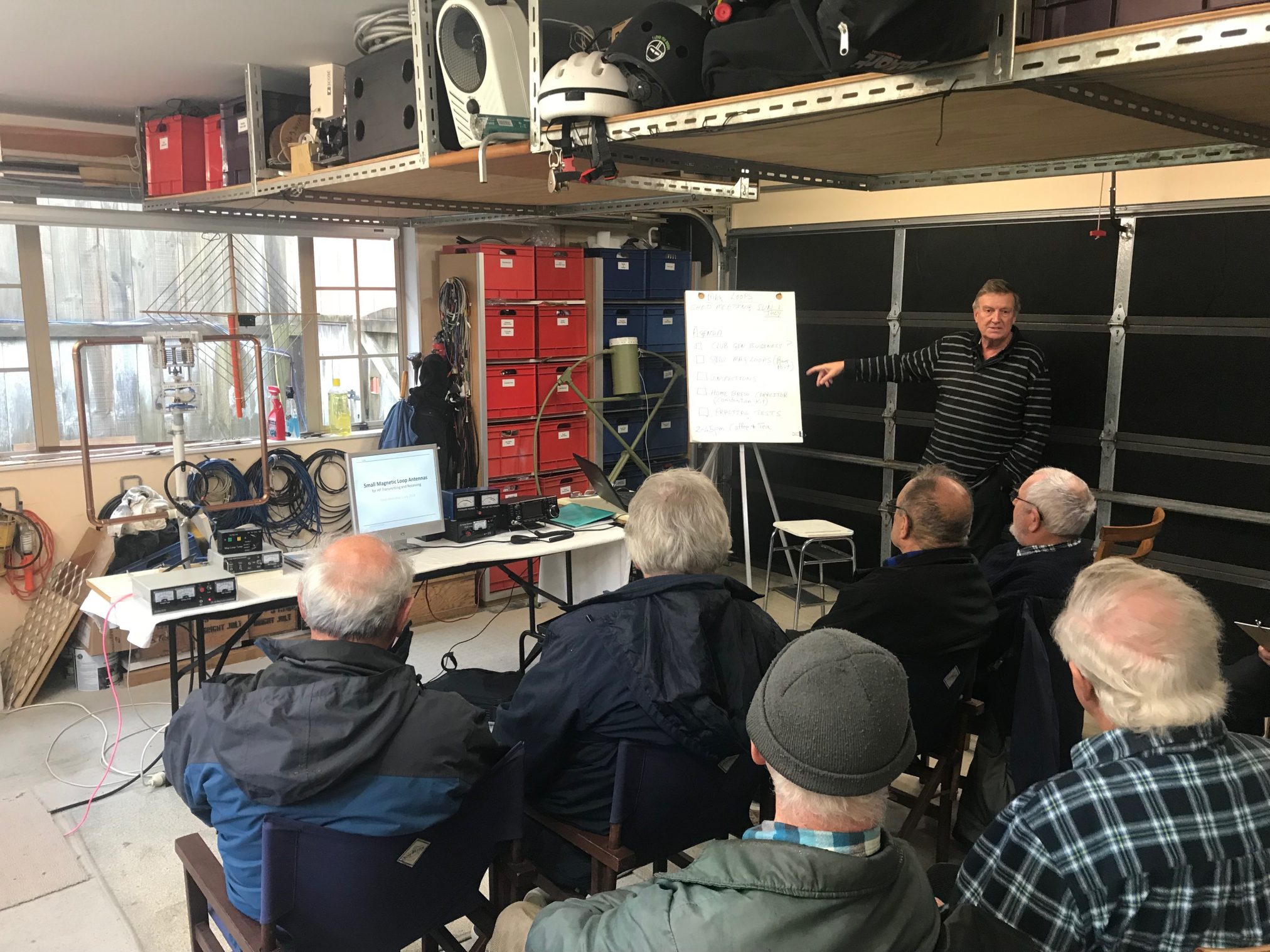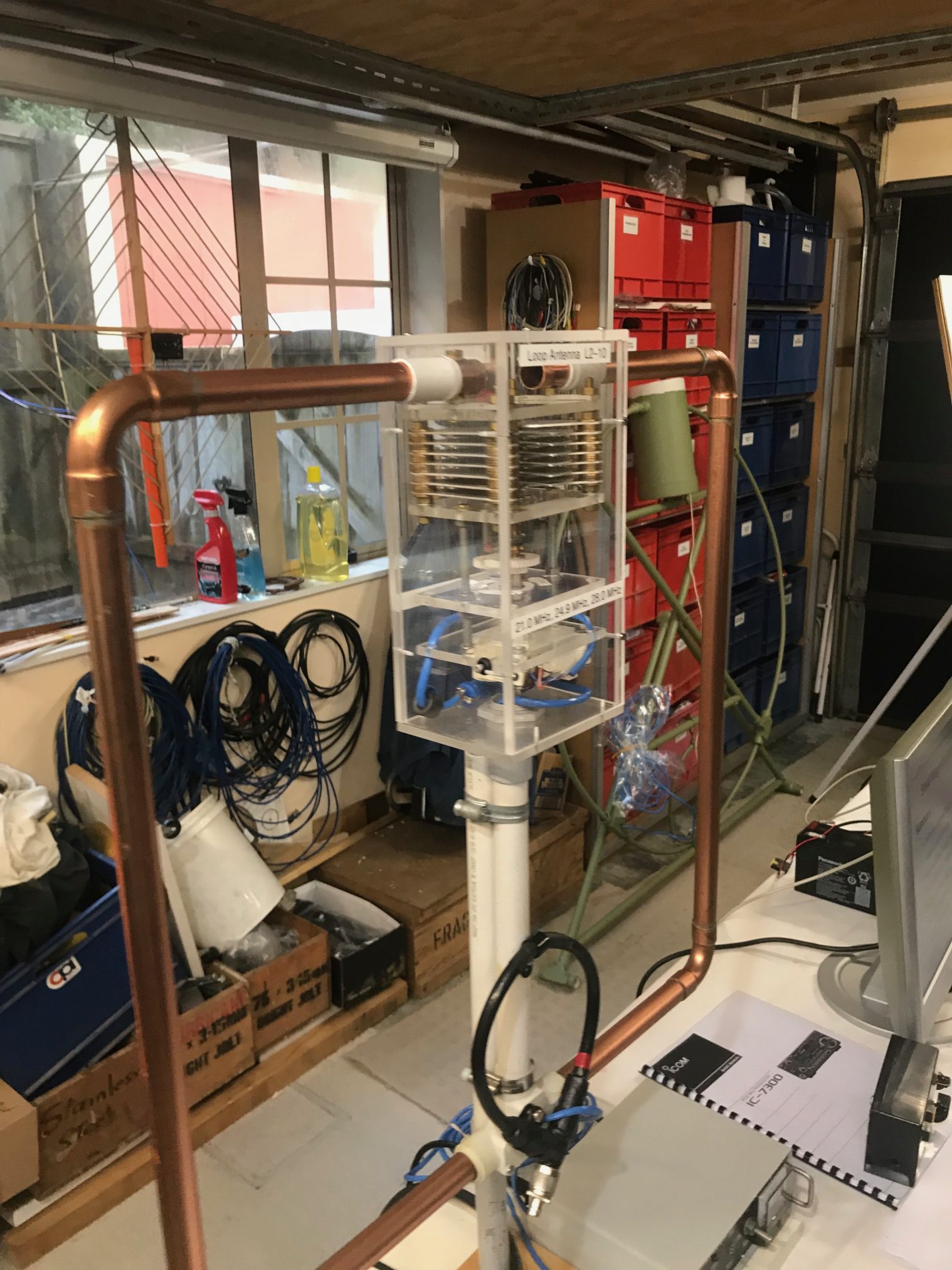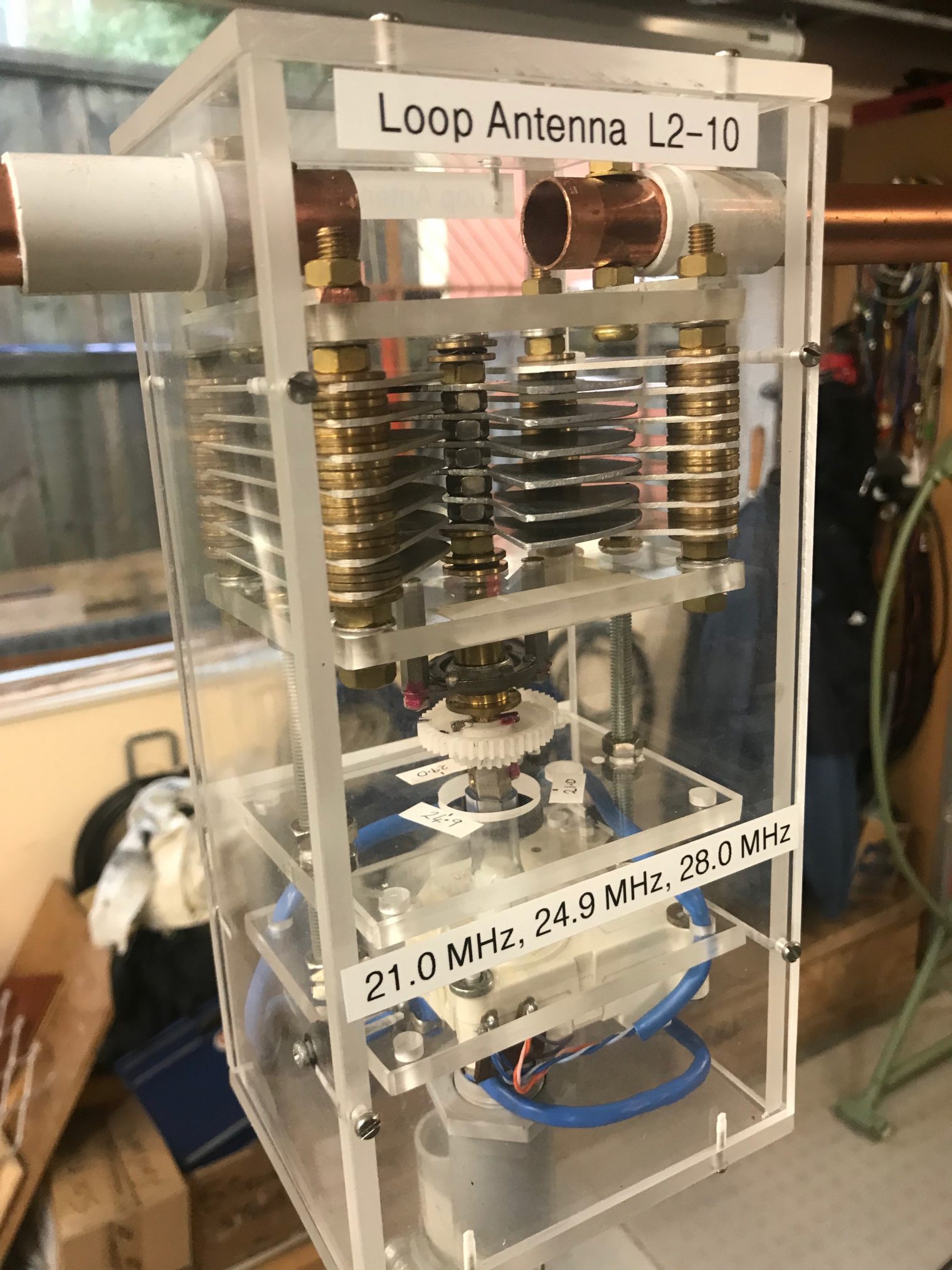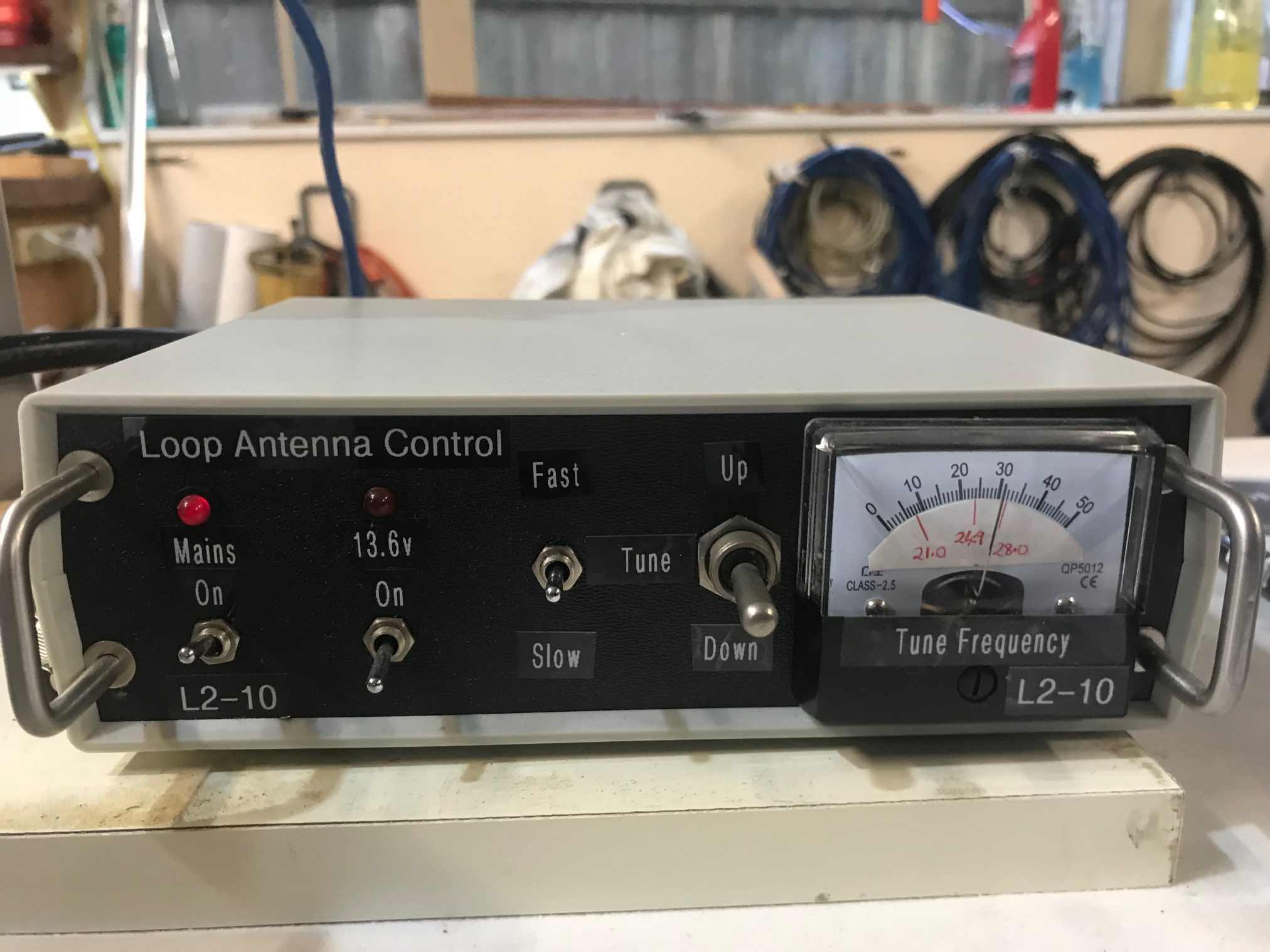
Our recent shed workshop on 4 October was held at Bernard ZL2BD’s QTH at 1 Winsley Tce, Churton Park.
RX Only Magnetic Loops
The workshop summarised further RX Magnetic Loop experiments undertaken by Bernard ZL2XJ and answered the following questions.
Is a broadband RX loop as good as a tuned loop?
No. A tuned loop results in around 6dB better signal/noise ratio and will allow you to hear stations that cannot be heard on a broadband RX magnetic loop antenna. However, the broadband loop has its place in that re-tuning is not required (e.g. in a remote SDR receiver situation). It may also be difficult to tune a single loop across a broad spectrum (e.g. 150kHz to 30MHz).
Do you still get an advantage in using a phasing device to null out noise?
Yes. Phasing two RX antennas will also give you an additional lift in Signal/Noise Ratio.
Would a RX only loop be better than a TX loop for most amateur operators?
A TX loop if designed and built correctly can approach or equal the performance of typical amateur low band antennas (e.g. for 160m and 80m) that will necessarily be sub-optimal in height above ground in urban and sub-urban situations. However, a TX magnetic loop is more demanding to build and an RX loop with a TX/RX switch may be a better solution for most amateur operators.
What do RX loops look like?
The loop above is a broadband loop that will be deployed this summer by RemoteDX in an SDR receiver.
How big does an RX loop need to be to cover100kHz to 30mHz?
Around 600mm to 2 metres in diameter depending on which frequencies you want to cover.
40m TX Magnetic Loop
Bernard also indicated, in following up a comment from Bob ZL2CA in relation to the 40m transmitting magnetic loop, recommends instead of using wire (as demonstrated in the August shed workshop) to connect a fixed capacitor to the plates of the butterfly capacitor it would be better to use copper straps or to add fixed plates to the capacitor. The reason is that a fixed capacitor will carry the majority of the current in a loop (up to 60 amps).
RemoteDX SDR Receiver Project
Bernard outlined in more detail, what was entailed in the RemoteDX Inc SDR receiver project. Documentation will be provided at a later date on the remotedx.nz website. The committee is busy progressing project planning.
Used equipment for sale

Derek ZL2AKS, a long-term member of the club (over 60 years) has asked the club to dispose of quite a collection of used equipment. Bernard ZL2BD is organising the equipment for sale to members, and disposal on TradeMe where there is no interest from members in remaining items. The equipment includes two rarely sighted Yaesu FT One transceivers from the early to mid-1980s. Enquiries to Bernard to view.
Training session on OpenGD77 firmware

Mike ZL1AXG, following the afternoon tea break, provided a training session to attendees in the use of OpenGD77 on Radioddity GD77 and Baofeng 1801/860 handheld transceivers. The meeting concluded around 4.30pm.

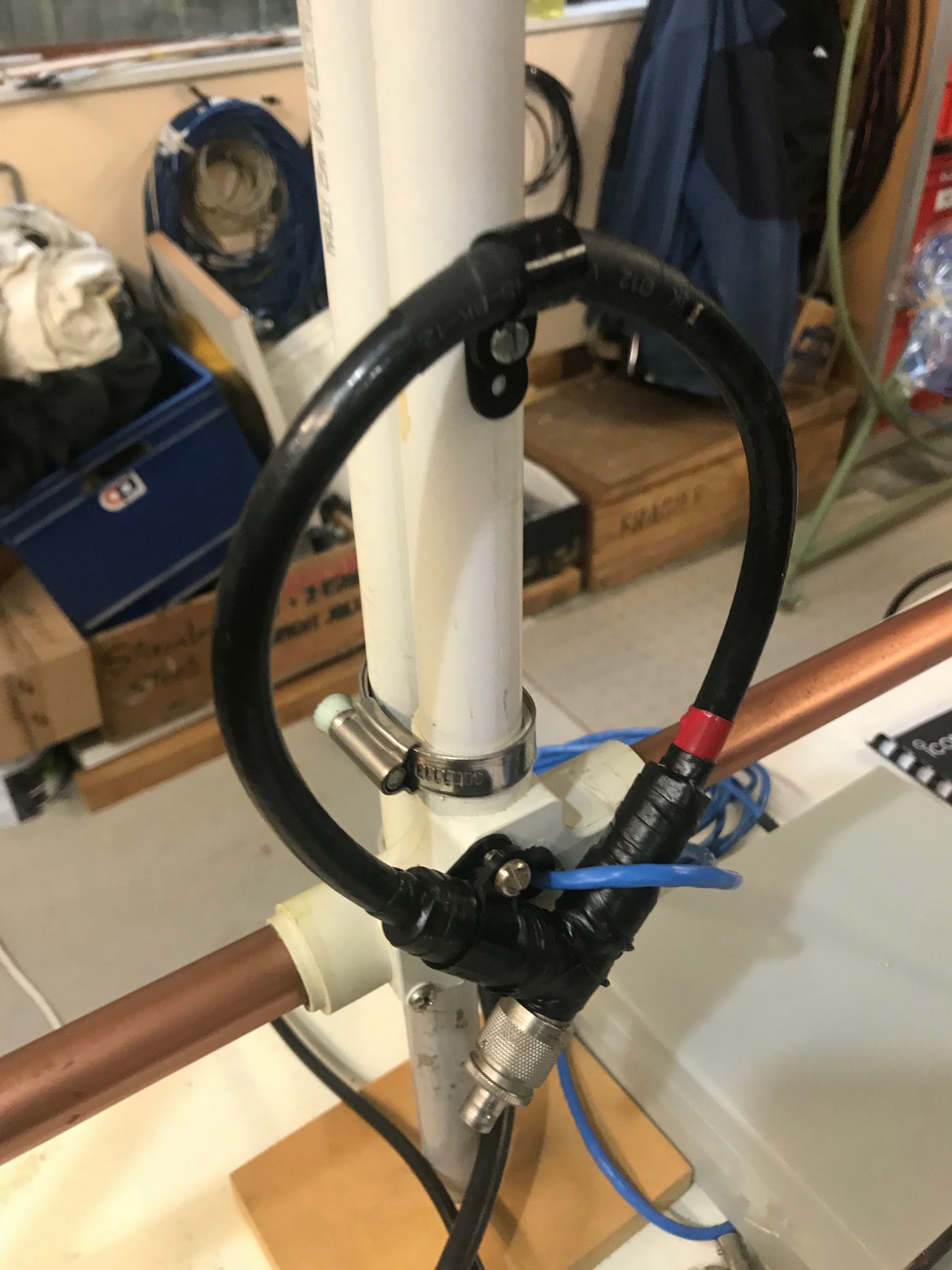 Bernard ZL2BD hosted another shed workshop on Sunday 5 August 2018 from 1pm -3pm at his QTH.
Bernard ZL2BD hosted another shed workshop on Sunday 5 August 2018 from 1pm -3pm at his QTH. 